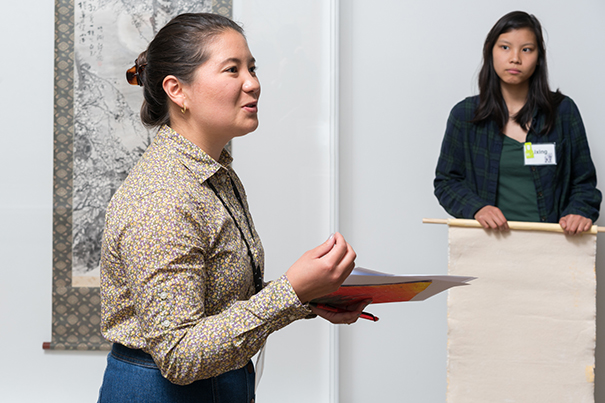
Jessica Magyar, GSE ’17, speaks to a CRLS art class in a collaborative program to empower young teachers and students to teach and learn from original artworks at the Harvard Art Museums.
Photo by Matthew Monteith
An academic partnership where all learn
Program invites Rindge and Latin students to sample and create works at Harvard Art Museums
When Cambridge Rindge and Latin School art teacher Melissa Chaney brought her students to the nearby Harvard Art Museums this spring, the teenagers weren’t the only ones learning something new. As part of a Graduate Student Teacher internship, seven master’s students at the Harvard Graduate School of Education (GSE) gained hands-on experience by designing lesson plans for a series of class visits to the museums.
“One of the big draws of the program for me was the opportunity to connect with young people in the community,” said Jessica Magyar, GSE ’17, who partnered with Chaney’s intermediate-level painting class during the spring. “I’ve been interested in developing programs for and alongside youth. It’s not just about creating lessons, but about how to incorporate youth voices to produce programs that are meaningful and relevant to them.”
Like the other student teachers in her cohort, Magyar completed an intensive, year-long internship at the Art Museums during the last academic year. The grad students were selected for their experience in working with high school students — either in museums or in classrooms — and their interest in exploring innovative approaches to object-based teaching. They were assigned to classes that ranged in subject from American and world history to English to studio art. Five Rindge and Latin teachers also participated in this year’s program.
The grad students made a number of visits to CRLS to introduce themselves and the Harvard Art Museums and get to know the students in their classrooms. They also planned lessons and led a series of visits to the museums that complemented the students’ classroom work, which added the crucial dimension of deep engagement with original artworks.
“Because Rindge and Latin classes visit multiple times over the course of the semester, the students are able to build the museum literacy skills they need to make those visits more than just field trips,” said Correna Cohen, a fellow in the museums’ Division of Academic and Public Programs, who oversees the program alongside David Odo, director of student programs and research curator for University collections initiatives. “Rather than simply coming to look at art, students are analyzing it and incorporating it into their learning in an active way,” Cohen said.
Image gallery
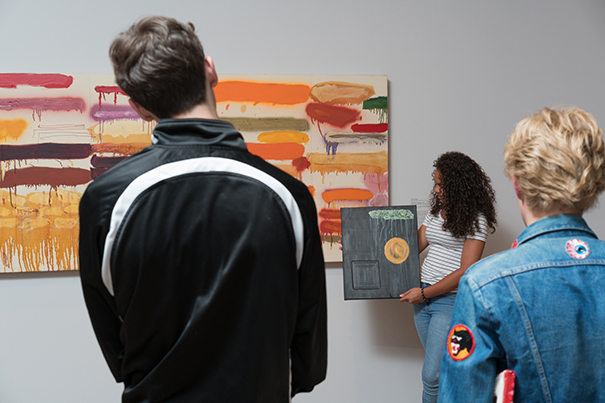
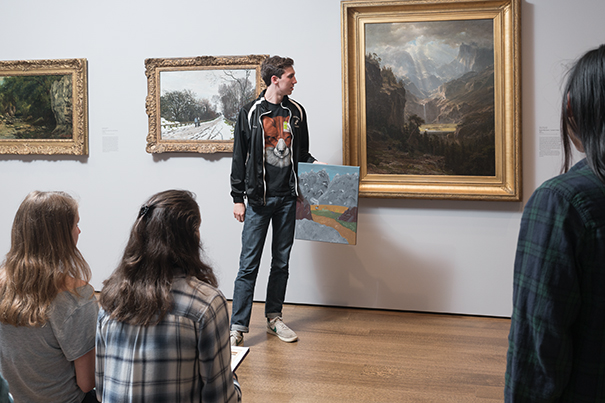
CRLS students in Melissa Chaney’s intermediate-level painting class present their final projects near the pieces that inspired them. Photos by Matthew Monteith
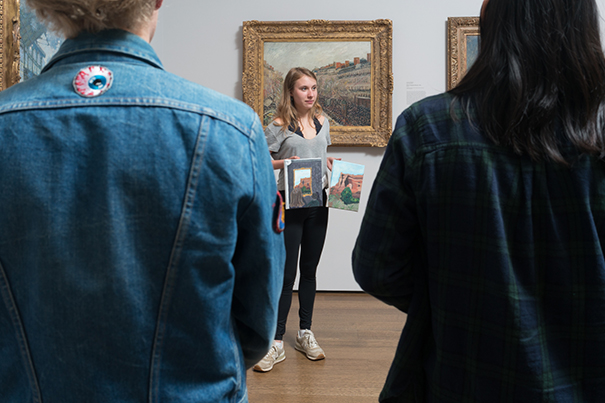
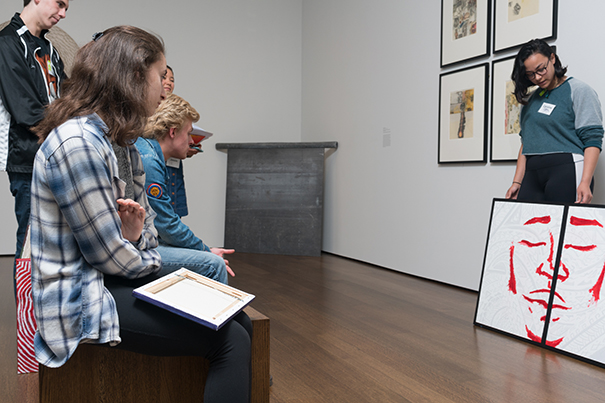
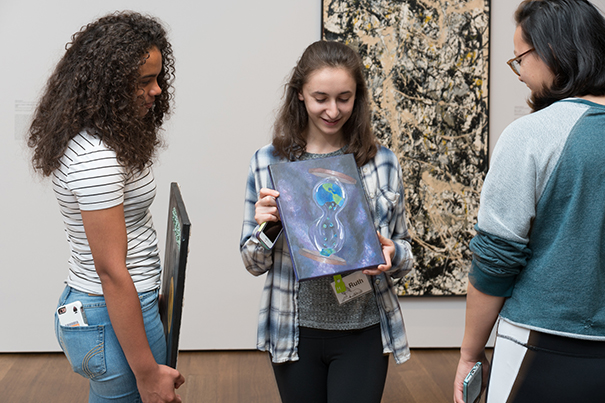
Seeds of inspiration
Concentrating on object-based teaching under Odo and Cohen and student-guided pedagogy (sparked in part by the GSE courses “Partnering with Youth in Educational Research and Practice” and “Learning, Teaching, and Technology”), Magyar tailored her lessons to the Rindge and Latin students’ passions and curiosities. By polling the class early in the semester, she learned that the students wanted to explore gender relations, social justice, and environmental issues, and she kept those topics in mind as she planned their museum visits.
“I tried to create frameworks for each lesson, but to allow students the freedom to explore, find things that interested them, and create their own work and understanding,” Magyar said. “Students had said early on that they didn’t necessarily want to come into a museum and hear four mini-lectures on four objects or gain a lot of information through a more traditional pedagogy or method.”
Although they studied a diverse selection of objects, works in the Modern and Contemporary Art galleries and East Asian Art galleries proved especially meaningful to the students, Magyar said. Each visit was different, with activities that engaged technical and critical thinking skills. During one visit, Magyar gave the students an “object remix” assignment: Find a work of art that speaks to social justice, and then remix it in a sketch that put it into the context of 2017.
“I’ve never had an art class like this before,” said Zane Goodnow, a Rindge and Latin senior. “We had a lot more freedom to do what we wanted.”
The final assignment was to reinterpret a work in the museums’ collection. Caroline Daley, a junior, used the opportunity to explore representation. The museum visits had made her realize that historically people of color weren’t well represented in portraits or other forms of Western art.
“That was not something I wanted to complain about, but something I wanted to shift,” Daley said. For her final project, she filled a large canvas with Samoan tattoo designs, to reflect her mother’s heritage, and a portrait of a Polynesian woman. Like the work she was interpreting, a painting by Jasper Johns made up of two canvases, her piece was split down the middle.
Exhibition-ready works
As the semester came to an end, the students made one last visit to present their final projects near some of the original art that inspired them. Their projects are now receiving a public reception: They’ll be on display in the Gutman Library gallery in an exhibition titled “Wall to Wall” until Aug. 30.
Chaney said the formal display of the students’ art “made the learning so authentic for the students. It took it beyond the classroom and connected it to the art world at large. Jessie’s lessons engaged the students in some deeper thinking and concepts, and I think our minds have been opened in new ways from our visits.”
Another, more practical takeaway for the Rindge and Latin students, she said, has been learning that they can use the Art Museums as a resource. (Cambridge residents, as well as those under 18, are admitted for free.) “I really love that a couple of students have already visited on their own. It’s there for them to access if they need inspiration. They can sit down with a sketchbook and look at a work more carefully, or go there to decompress.”
Odo said he was impressed by how both sets of students became “empowered to, in effect, co-create the program. It has been tremendous to see the museums function equally well for students of all levels as a place of creative exploration and learning.”



